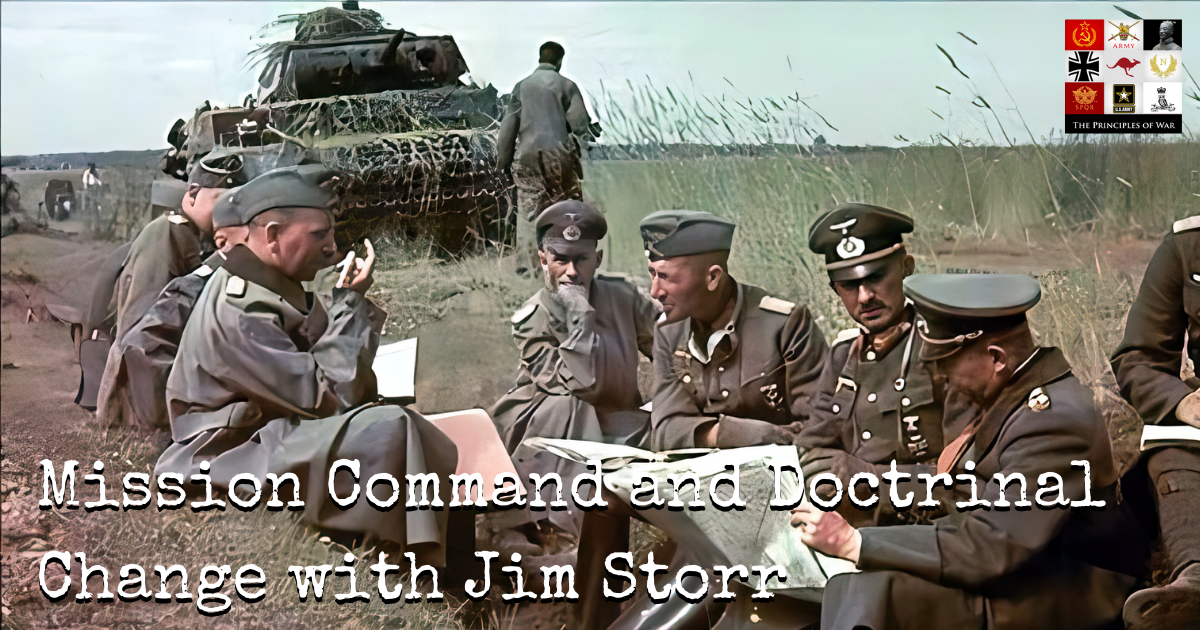This episode looks at Mission Command Doctrine and Culture. It is part 2 of our interview about Command and Mission Command with Dr Jim Storr, the author of Something Rotten: Land Command in the 21st Century.
We look at the ability of small headquarters to produce orders faster than larger headquarters and discuss why that might be so. Mission Command doesn’t just happen, the good practitioners have usually had an education that has enabled them to understand Mission Command and its practice.
We discuss the importance of Truppenfurhing and the British Staff Duties in the Field, 1949. Staff Duties in the Field was the distillation of wisdom and lessons learnt from 6 years of combat for the British Army. It’s focus on speed came about because that enabled combat superiority on the battlefield.
We discuss the doctrinal changes with the British 7 questions and the Australian Military Appreciation Process.
How does training enable Mission Command and what sort of training should it be?
How do we achieve synchronisation in a Mission Command, abbreviated orders framework?
Dr Storr argues that there should be no synchronisation matrix. Synchronisation should be in time, purpose and place, but not top-down. Top-down tends to go wrong and gives the enemy advantages. Give subordinates the resources required to achieve their mission and allow them to synchronise at the lowest level. As GEN Patton said, “Never tell people how to do things, tell them what to do and they will surprise you with their ingenuity.”
How do we achieve cultural change to support Mission Command?
Are we able to enable a military culture that will support Mission Command? What would a training program that supports the development of a Mission Command culture look like? How do we affect cultural and doctrinal change within Armies to support the effective use of Mission Command?
Is defeat the greatest teacher of Mission Command? How do we develop Mission Command Doctrine and Execution to deliver effects at speed without losing a war?
Realistic timeframes to produce orders
Dr Storr argues that realistic (and successful) timeframes for the generation of orders are:
LEVEL To Produce Orders To Execute
Battalion 1 hour 4 hours
Brigade 2 hours 8 hours
Division 3 hours 12 hours
Corps 4 hours 16 hours
These timings are based on an entirely new and unexpected mission but within a familiar operational context. Storr, 2022, p. 88. The timeframes have been supported by past doctrine, along with examples of Divisional attacks executed within 12 hours.
About Dr Jim Storr
Jim Storr was an infantry officer in the British Army for 25 years. He served in the British Army of the Rhine for five years in the 1980s. A graduate of the Army Staff College, Camberley, he also worked in the Ministry of Defence, the Defence Evaluation and Research Agency, and wrote high-level doctrine.
He was a professor of war studies at the Norwegian Military Academy for four years. His published works include ‘The Human Face of War’, ‘The Hall of Mirrors’ and ‘Something Rotten’.








